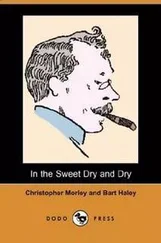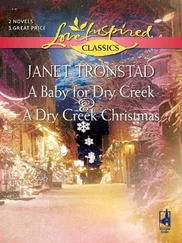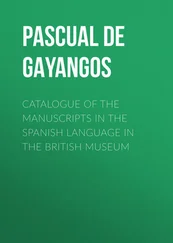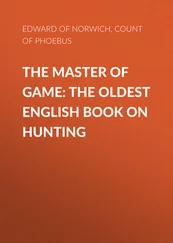1 ...8 9 10 12 13 14 ...19 The largest group of dry-point annotations is concerned with a number of grammatical emendations to the text, such as pronouns in the accusative case following the preposition OE mid . The corrector – working in dry-point – adds the dative ending of the demonstrative pronouns above the forms, only replacing the letters that have to be changed to arrive at the dative form. Wallis (2013b: 173) quotes the example OE mid þa gyfe ‘with the gift’ (f. 26 v), above whose demonstrative pronoun the corrector added the letters ære in dry-point in order to turn the acc. form of the OE pronoun from þa (f. acc. sg.) into þære (f. dat. sg.).
In a second, smaller group of annotations, lexical substitutions are made in dry-point. Thus, for instance, the reading hiwan ‘retainers’ in the relative clause þe se cyning ne cuðe ne his hiwan ‘which neither the king nor his retainers knew’ is emended to the contextually quasi-synonymous hired ‘household’ by means of a drypoint superscript red on f. 42 v. Wallis (2013b: 181) surmises that “ hiwan was losing popularity to hired in the course of the eleventh century”.
In a third group Wallis assorts textual annotations, in which Anglian spellings are modified to comply with West Saxon spelling conventions. The spelling Pehta ‘Pict’ (with Anglian smoothing) in two instances of Book 3, for instance, triggered the addition of dry-point above the , transmuting the form into Peohta , displaying breaking. Incidentally, a third appearance of the same word form remains unammended. In other places, readings that are impaired by cramped lettering are confirmed in dry-point (Wallis 2013b: 186), and in two instances past participle forms are prepended by prefixal ge- (188).
Wallis also identifies a number of dry-point emendations which she takes as evidence that variant readings may have been incorporated from other exemplars of the translation of Bede’s History in dry-point. MS O reads ⁊ þær wæs ‘and there was’ and features a superscribed above the Tironian note. This emendation can be made sense of before the backdrop of the readings provided by MSS T and B oðer wæs ‘the other was’.Oxford, Bodleian LibraryTanner 10Cambridge, Corpus Christi CollegeMS 411
These are interesting finds that leave us hungry for more. If dry-point emendations were added to OE MSS in 11 th-c. England, it may well be that other (perhaps even well-known) MSS of OE texts feature similar annotations that have so far gone unnoticed due to their difficult visual nature. However, I shall not include these emendations as dry-point glosses proper in the present Catalogue . They can certainly be called “glosses” in Wieland’s (1983) sense, but in the traditional terminology of OE glossography they do not qualify as glosses.2 Their “comment” on the text, if you like, is of an altogether different kind. Yet, such annotations are closely related to dry-point glosses and it is to be hoped that similar observations will soon be collected from other MSS to put this usage of the stylus into perspective.
2.3.4 Dry-Point Glosses of Uncertain Linguistic Status
The “Echternach Gospels” – Paris, Bibliothèque nationale lat. 9389Paris, Bibliothèque nationalelat. 9389 [G:893], written around AD 700 in Northumbria or an Insular centre on the Continent – have long been suspected of featuring an OE gloss, at times even two OE glosses.1 Several articles have been published on the topic, but no detailed linguistic study successfully arguing that any of the glosses are OE has been published to date. CLA (5 [1950]: 578) reports a single, supposedly OE dry-point gloss bigine glossing L. incipientes (Jn 8: 9) on f. 194 r.2 Muller (1985: 67–69) edits 10 dry-point glosses from the MS, of which he identifies 2 as OHG (including the gloss bigine that CLA thought to be OE) and 8 as L. In a first draft of his edition (Muller 1983), which Muller himself later considered to be obsolete (cf. Muller 1985: 69, n. 226), Muller had thought the above-mentioned gloss bigine and another dry-point gloss, which he read as scip (Muller 1983: 388), to be OE. Muller later (Muller 1985), however, argues convincingly that bigine ought to be considered OHG and the other gloss to be L. s cip , meaning L. s[cilicet] cip ‘read “cip” [instead of coep]’, which he assumes to be a (partial) emendation of the text’s original L. coepimus (Lk 5:5). Hence, while Muller (1983: 389) initially agreed with CLA that the form bigine was OE, two years later (1985: 69) he is in favour of OHG (“[d]och liegt eine Deutung aus dem Althochdeutschen näher”3).
Ó Cróinín, however, who is apparently not aware of Muller’s updated (1985) edition and instead refers to Muller’s retracted (1983) edition, repeats CLA ’s claim that the gloss bigine is OE:
The Echternach Gospels have not usually been included in discussions of manuscripts containing Old English and Old High German glosses, although E.A. Lowe had pointed out (CLA V 578) the presence of one such OE dry-point entry (f. 194r incipientes gl. bigine ). (Ó Cróinín 1999: 87)4
Ó Cróinín (1999) also edits an additional 9 or 10 L. dry-point glosses, which Muller (1985) does not mention, but Ó Cróinín also repeats Muller’s retracted (1983) reading scip without specifying its supposed linguistic status. Ó Cróinín does not explicitly discuss any of the forms, but he appears to be in favour of OE, at least for the gloss bigine .
Glaser (1997: 17–18) edits 12 dry-point glosses from the “Echternach Gospels”, 10 of which had not been edited before, and she only cautiously refers to them as “volkssprachig”.5 BStK (1478) – presumably based on Glaser & Moulin-Fankhänel (1999: 108) – refers to 12 dry-point glosses and reports the language of all the vernacular glosses in the “Echternach Gospels” as “unbestimmt”.6 The majority of German scholars mentioning the dry-point glosses in the “Echternach Gospels” is undecided: “altenglische oder althochdeutsche Stilusglosse” (Ebersperger 1999: 110);7 “wohl alle deutsch […] (englisch in einigen Fällen nicht ausgeschlossen)” (Seebold 2001: 36);8 “[a]ltenglisch in einigen Fällen aber doch nicht völlig ausgeschlossen” (Köbler 2005: 511);9 “Glossen in beiden Sprachen […] (wohl auch) im Echternacher Evangeliar” (Bulitta 2011: 166);10 no gloss in particular, however, is explicitly declared to be OE. That means that the inclusion of the “Echternach Gospels” as an OE dry-point gloss MS in our current Catalogue really only hinges on the conflicting statements about the linguistic attribution of the gloss bigine .
The reading bigine (with Insular <���ᵹ>) for the gloss in question is confirmed by CLA (5: 578), Muller (1983: 389), Muller (1985: 69), Glaser (1997: 18), Ó Cróinín (1999: 87) and Glaser & Moulin-Fankhänel (1999: 108).11 Nievergelt & De Wulf (2015) point out the existence of a further letter after , perhaps . Muller offers hand-drawn reproductions of the dry-point material (1983: 386 and 1985: 70) and he hints at the possibility that there might be an abbreviation stroke on top of < n>,12 but his reproductions do not document that mark and none of the other editors mention it; Nievergelt & De Wulf (2015) clearly reject the notion after having autopsied the dry-point writing.
CLA ’s (5: 578) and Muller’s (1983: 10) initial (but later retracted) identification of the form bigine as OE and the subsequent unassertive treatment of that gloss in OHG scholarly literature is motivated, at least partly, by the fact that the form bigine does not fit OHG expectations; especially the single -n- of the form is suspicious, but it is only rarely attested in OE, too. Since the gloss is formally incongruent with its lemma L. incipientes , some kind of abbreviation or merograph would have to be pre-supposed. Muller (1985: 69) tentatively (and in apparent disbelief) expands to OE biginnende ; Nievergelt & De Wulf (2015: 92–94) reconstruct OHG * biginnag or OE * beginag ‘beginning’ while stressing that their reading somewhat hinges on the final , which remains uncertain.
Читать дальше












